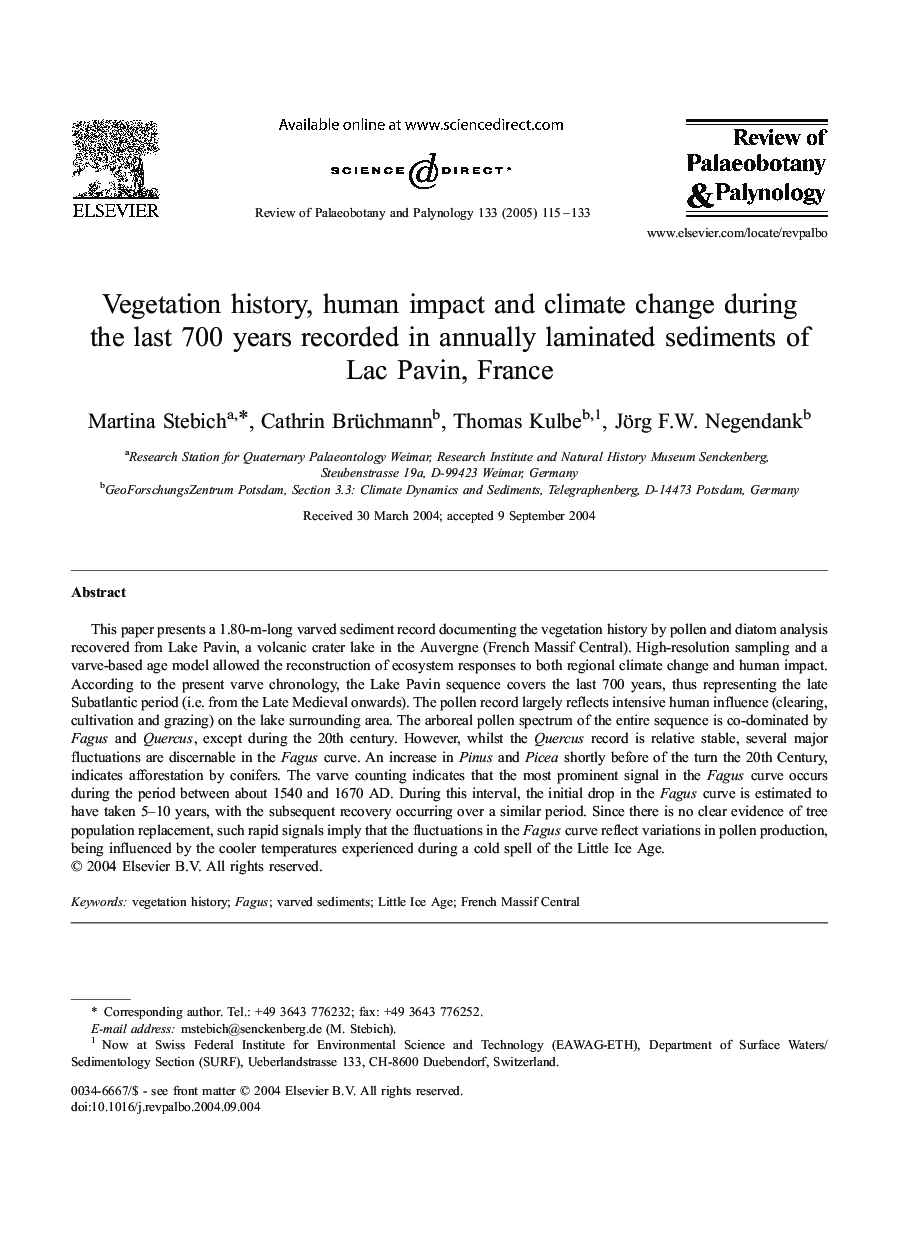| Article ID | Journal | Published Year | Pages | File Type |
|---|---|---|---|---|
| 10122132 | Review of Palaeobotany and Palynology | 2005 | 19 Pages |
Abstract
This paper presents a 1.80-m-long varved sediment record documenting the vegetation history by pollen and diatom analysis recovered from Lake Pavin, a volcanic crater lake in the Auvergne (French Massif Central). High-resolution sampling and a varve-based age model allowed the reconstruction of ecosystem responses to both regional climate change and human impact. According to the present varve chronology, the Lake Pavin sequence covers the last 700 years, thus representing the late Subatlantic period (i.e. from the Late Medieval onwards). The pollen record largely reflects intensive human influence (clearing, cultivation and grazing) on the lake surrounding area. The arboreal pollen spectrum of the entire sequence is co-dominated by Fagus and Quercus, except during the 20th century. However, whilst the Quercus record is relative stable, several major fluctuations are discernable in the Fagus curve. An increase in Pinus and Picea shortly before of the turn the 20th Century, indicates afforestation by conifers. The varve counting indicates that the most prominent signal in the Fagus curve occurs during the period between about 1540 and 1670 AD. During this interval, the initial drop in the Fagus curve is estimated to have taken 5-10 years, with the subsequent recovery occurring over a similar period. Since there is no clear evidence of tree population replacement, such rapid signals imply that the fluctuations in the Fagus curve reflect variations in pollen production, being influenced by the cooler temperatures experienced during a cold spell of the Little Ice Age.
Related Topics
Physical Sciences and Engineering
Earth and Planetary Sciences
Palaeontology
Authors
Martina Stebich, Cathrin Brüchmann, Thomas Kulbe, Jörg F.W. Negendank,
